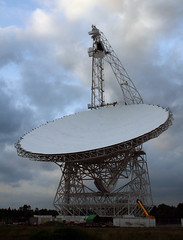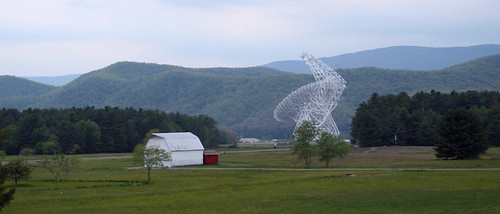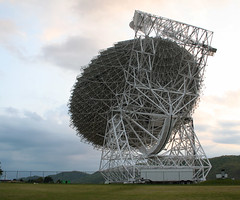
As you drive out towards Green Bank, in rural West Virginia, cell phone service fades away, and most of the FM dial hisses with empty static. In a world awash with radio noise, the 13,000 square mile National Radio Quiet zone is an oasis of silence. And in its heart sits the Robert C. Byrd Green Bank radio telescope, part of the National Radio Astronomy Observatory. At 100 meters in diameter, the GBT is the world's largest fully-steerable single dish. (It is much larger than the 64 m Parkes telescope, and while the 305 m Arecibo dwarfs them both, Arecibo is not fully steerable.)
The massive telescope also has a rather unusual design: it is an off-axis section of a much larger parabolic surface. Its view of the sky is not obstructed by the usual support arms or receivers, leading to wonderful performance characteristics. Each of its two thousand and four surface panels can also be individually adjusted, allowing the telescope to precisely focus radio waves as short as 3 mm in wavelength. However, the unusual design means that each panel is unique, adding cost and complexity, and the telescope is so massive that the track it turns on has repeatedly buckled, leading to shutdowns and expensive repairs. That's what construction by the lowest bidder will do, I guess...
Meanwhile, in spite of the maintenance issues, the Robert C. Byrd telescope (named after West Virgina's powerful senator, like most other large projects in the state) has become one of the most productive radio telescopes in the world. Nestled in the Allegheny mountains, far away from the rest of civilization, it provided a serene backdrop to our pulsar workshop.



No comments:
Post a Comment